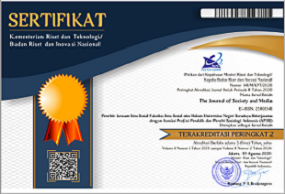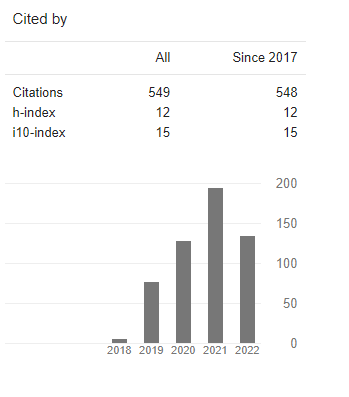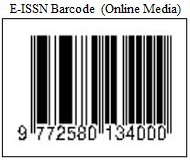Indonesian Teen Romanticism: The Underlying Ideology of “Film Television" (FTV) During Covid-19 Pandemic from a Gender Perspective
DOI:
https://doi.org/10.26740/jsm.v5n1.p129-150Keywords:
film television, framing analysis, gender, ideology, mediaAbstract
This research examines the underlying ideology(s) of a TV program called 'Film Television' (FTV). This TV program is on during the Covid-19 Pandemic. Specifically, using framing analysis and gender perspective approach as a methodology, this research analyses how these ideologies developed in FTV. Six prime samples of FTV were chosen, namely Laki-Laki Buaya Darat, Cowok Gue IQ-nya Ancur Banget, Cowok Gue Pendek Bener, Pacar honorer, Ganteng-ganteng Medit, Pacar Gue Brondong. The findings reveal a thrust of the twin-contrarian thrust of messaging. There are two embedded ideologies underlying the FTV. First, the FTV production house carries a patriarchal ideology by raising themes that discriminate against women through stereotypes against women that appear in the story. Second, the FTV production house carries the ideology of feminism, with themes that position women as superordinates. Women occupy a higher social class than men. This finding of twin-contrarian ideological thrust offers an essential contribution to the gender theoretical vacuum of Indonesian TV as an example of Asian teen romanticism in national TV programming during a global crisis. It has conceptual implications on the repertoire of social science knowledge, especially sociology, particularly research on women's bodies and beauty, sociology of gender and media, and sociology of the family.
References
(https://id.wikipedia.org/wiki/Televisi_di_Indonesia).
Banerjee, Sarmistha. 1995. Alienation, Power, and Gender in Sociological
Theory : A Study of Marx, Foucault, and Feminism. Northern Illinois University.
Baudrillard, Jean. 1998. The Consumer Society: Myths and Structures. Edited by M. Featherstone. London: Sage Publications.
Burns, R. W. 20007. Television. An International History of the Formative Years. London: The Institution of Engineering and Technology.
Butler, Judith. 2004. Undoing Gender.
Butler, Judith. 2011. Bodies That Matter: On the Discursive Limits of Sex. Routledge.
Butler, Judith. 2015. Gender Trouble: Feminism and the Subversion of Identity. Routledge.
Corcoran, E. R. 2005. Stigma, Perceived Dangerousness, and Mental Illness. Connecticut: Central Connecticut State University.
Van Dijk, Teun A. 2008. Discourse and Context: A Sociocognitive Approach. Cambridge, New York, Melbourne: Cambridge University Press.
Van Dijk, Teun A. 2009. Society and Discourse: How Social Contexts Influence Text and Talk. Cambridge University Press.
Van Dijk, Teun A. 2012. Discourse as Structure and Process (Discourse Studies: A Multidisplinary Introduction Volume I). London, Thousand Oaks, New Delhi: Sage Publications.
Francis, David, and Stephen Hester. 2004. An Invitation to Ethnomethodology Language, Society and Social Interaction. London, Thousand Oaks, New Delhi: Sage Publications.
Gamson, William A., David Croteau, William Hoynes, and Theodore Sasson.
Garfinkel, Harold. 1967. Studies in Ethnomethodology. edited by E. Cliffs. New Jersey: Prentice Hall Inc.
Kompas.Com. Retrieved
Goffman, Erving. 1975. Frame Analysis: An Essay on the Organization of Experience. Boston: Northeastern University Press.
Goffman, Erving. 1987. Gender Advertise. New York: Harper & Row Publishers.
Goldsmith, I. G. 1972. Children and Television Advertising. Ohio: Ohio State University.
Have, Paul ten. 2004. Understanding Qualitative Research and Ethnomethodology. London, Thousand Oaks, New Delhi: Sage Publications.
Holmes, Mary. 2008. Gender and Everyday Life.
Lynch, Michael. 1997. Scientific Practice and Ordinary Action: Ethnomethodology and Social Studies of Science. Cambridge: Cambridge University Press.
Maheshwar, Mekam, Karnam Narender, N. Balakrishna, and D. Raghunatha Rao.
Reed, T. V. 2014. Digitized Lives: Culture, Power, and Social Change in the Internet Era.
Ryder, Martin, Theodor Adorno, Louis Althusser, Anthony Giddens, Antonio Gramsci, Agnes Heller, Paul De Man, and Maurice Merleau-ponty Richard
Sadewo, F. S., A. Trilaksana, and M. A. Affandi. 2007. Dari Doraemon Dan Sichan Hingga Spongebob, Jimmy Neutron Dan Fairy Oddparents: Analisis Framing Tentang Pengaruh Budaya Dalam Pengembangan Tema Film Kartun Produk Asing Dan Fungsinya Dalam Pembentukan Karakter Anak Di Surabaya Dan Sekitarnya.
Skrzypiec, G. K. 1996. Adolescents, Food Behaviour and Television. University of Adelaide.
Storey, John. 2014. From Popular Culture to Everyday Live. edited by J. Storey. Oxford and New York.
Wahid, Sara, Aazadi Fateh Muhammad, and Fateh Muhammad Burfat. n.d.
Watson, Rod. 2009. Analysing Practical and Professional Texts: A Naturalistic Approach. England: Ashgate Publishing limited.
Whitty, Monica T., and Joinson. 2009. Truth, Lies and Trust on the Internet.
Downloads
Published
How to Cite
Issue
Section
License
Copyright (c) 2021 The Journal of Society and Media

This work is licensed under a Creative Commons Attribution 4.0 International License.
 Abstract views: 887
,
Abstract views: 887
, PDF Downloads: 1243
PDF Downloads: 1243












